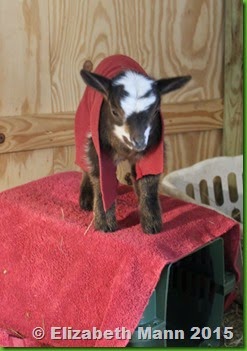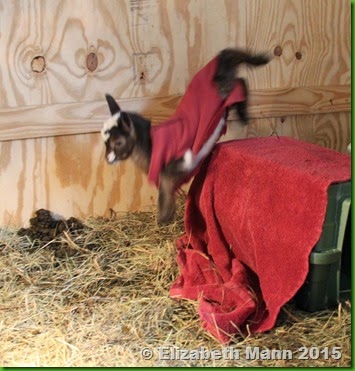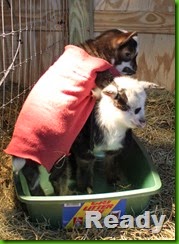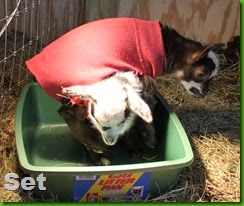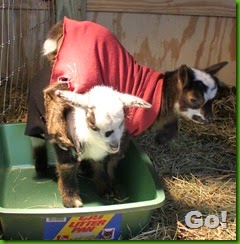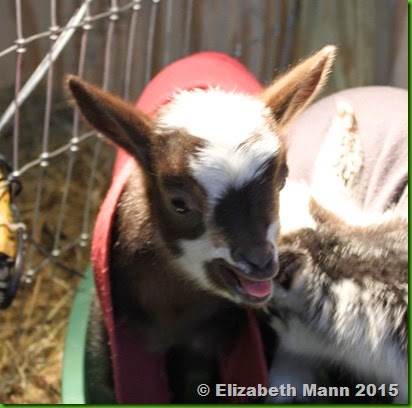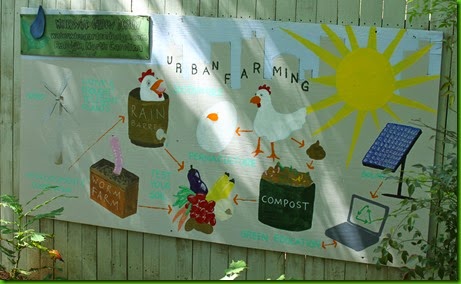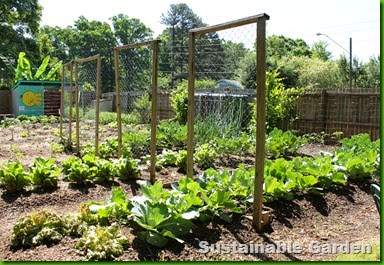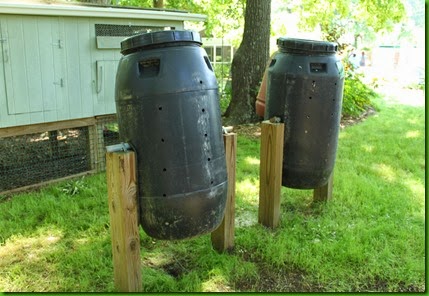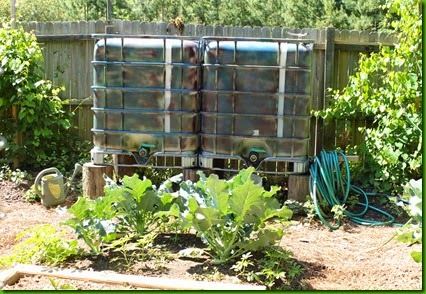Spring is around the corner so that means…. babies! In this case my family got to experience watching Nigerian Dwarf babies (known as kids) as they pranced and jumped around. They were a sight to behold. We did get to hold them which catapulted a discussion of possible goat names. My personal opinion is that we should stick to having a category for the names we choose. We tend to stick with royal names when it comes to our animals, but I think the goats should be named after spices. Ginger, cinnamon, rosemary, and maybe even dill just seems so very appealing when you think about it. I think the name “Cocoa” would even be a good fit for the goat pictured above. With friends we even tossed around the name “Powder Puff” or “Cocoa Puff.” I think we should take a vote for the final decision.
Two Nigerian Dwarf goats had been birthed on the day of our arrival. The recommended time for breeding Nigerian Dwarfs is either in Fall so they kid in Spring or breed them in Spring so they kid in the fall. You should not breed in the Winter or Summer which would have them kid in the heat or cold. A Nigerian Dwarf doe can have between 1 – 7 kids at a time with twins and triplets being the most common. That is a lot of weight to carry around!
Does generally have easy kidding so there isn’t too much fuss in the process, but being there just in case is a good idea if complications do come up. The gestation period is 145 days for Nigerian Dwarfs. A Doe giving birth up to 10 days before the due date is considered safe. The labor can last about 5 hours and the baby will weigh about 2 – 4 pounds when it is born. It is necessary for a doe to have a kid if you intend to milk her. If you want to wean the baby wait until it is at least 6 weeks old, but if you are bottle feeding wait 4 – 5 weeks.
A video of a Doe giving birth: https://www.youtube.com/watch?v=sZvjK_G8EB0&safe=active
The goats were taking a pleasant nap until we entered the scene. They were ready to show of their jumping skills once we got all settled in.
And with a burst of energy he jumps! If you are a bunny enthusiast you probably have heard the term, “binky.” I learned the concept from my brother who cares for our rabbits. When a rabbit binkies, it will jump into the air and twist its head and body in opposite directions before landing on the ground. Some call it the “happy bunny dance.” It is an expression of great joy and a high level of happiness. I discovered that baby goats can binky as well. Below is a video of the baby goats and their binkies are at the end.
As all babies do, the goats starting crying for their mommy.

After showing off a nap was well deserved for the little fellows.



